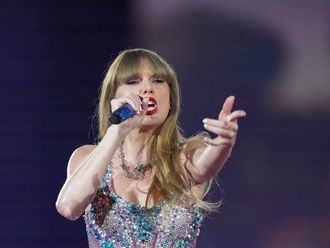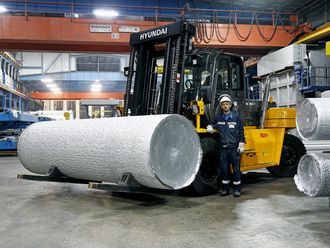Washington: US retail sales rose in December amid strong demand for automobiles and furniture, providing further evidence that the economy ended the fourth quarter with momentum and is poised for stronger growth this year.
The strengthening economy also is starting to generate higher inflation. Other data on Friday showed a second straight monthly increase in producer prices in December, which led to the biggest year-on-year gain in just over two years.
“The broader trend in the consumption data still looks solid,” said Daniel Silver, an economist at JPMorgan in New York. “Consumer spending will also likely continue to benefit from the recent increase in confidence and wage gains.” The Commerce Department said retail sales increased 0.6 per cent last month. November’s retail sales were revised up to show a 0.2 per cent rise instead of the previously reported 0.1 per cent gain. Sales were up 4.1 per cent from December 2015. They rose 3.3 per cent for all of 2016, up from 2.3 per cent in 2015.
Excluding automobiles, gasoline, building materials and food services, retail sales rose 0.2 per cent after being flat in November. These so-called core retail sales correspond most closely with the consumer spending component of gross domestic product.
Economists had forecast overall retail sales increasing 0.7 per cent and core sales gaining 0.4 per cent last month.
Lose ground
The retail sales report added to surveys on manufacturing and the services sector in suggesting the economy regained speed at the end of the fourth quarter after appearing to lose some ground in November.
Spending is likely to remain supported by lofty consumer sentiment levels.
The dollar rose against a basket of currencies after the data. Prices for US Treasuries were lower, while US stocks edged higher.
Rising wages due to a tightening labour market are expected to underpin consumer spending this year, providing a boost to the economy. Growth is also expected to get a lift from President-elect Donald Trump’s pledge to cut taxes, increase infrastructure spending and relax regulations.
Average hourly earnings increased 2.9 per cent in the 12 months through December, the largest gain since June 2009, the government reported last week.
“There is no reason to suspect that consumption growth is going to weaken in the first half of this year,” said Paul Ashworth, chief US economist at Capital Economics in New York.
“Particularly not when households will be anticipating a potentially big decline in tax rates at some point this year.” Against the backdrop of a labour market that is at or near full employment, Trump’s proposed fiscal stimulus could fan inflation and prompt the Federal Reserve to raise interest rates faster than is currently envisaged.
The Fed raised its benchmark overnight interest rate last month by 25 basis points to a range of 0.50 per cent to 0.75 per cent. The US central bank has forecast three rate hikes for this year. The Atlanta Fed is forecasting GDP rising at a 2.9 per cent annualised rate in the fourth quarter. The economy grew at a 3.5 per cent pace in the third quarter.
Inflation stirring
Even before the anticipated stimulus, inflation is perking up. In a separate report on Friday, the Labor Department said its producer price index for final demand increased 0.3 per cent last month after advancing 0.4 per cent in November.
That lifted the year-on-year increase in the PPI to 1.6 per cent, the largest gain since September 2014. The PPI rose 1.3 per cent in the 12 months through November. Producer prices increased 1.6 per cent in 2016 after falling 1.1 per cent in 2015.
Producer prices are rising as some of the drag from the plunge in oil prices fades. Oil prices have risen above $50 (Dh183.50) per barrel. But renewed dollar strength in the wake of Trump’s election could temper some of oil’s impact on inflation.
A 2.4 per cent jump in auto sales accounted for much of the rise in retail sales last month. There was also a boost from a 2.0 per cent rise in sales at service stations, reflecting higher gasoline prices.
Sales at building material stores increased 0.5 per cent as did those at furniture shops. Receipts at clothing stores were unchanged despite a generally busy holiday season. Department store giants Macy’s and Kohl’s Corp last week reported drops in holiday sales.
Department stores have faced stiff competition from online rivals including Amazon.com. Sales at online retailers jumped 1.3 per cent last month after gaining 0.3 per cent in November. Sales at sporting goods and hobby stores rose 0.2 per cent.
But Americans cut back on eating out, with receipts at restaurants and bars falling 0.8 per cent last month.











